Henrik Larssen
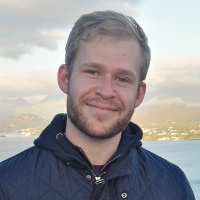
Prior to joining the Fluids CDT, I completed a MSc in Marine Technology at NTNU, Trondheim. Here, I developed a strong interest in Fluid Mechanics and especially in turbulent flows. My master’s dissertation studied the physics and the suitable turbulence modelling of the inclined prolate spheroid in the transitional regime. In this work, I was also focusing on verification and validation in computational fluid mechanics (CFD).
In line with my dissertation, I found Imperial’s research on turbulent flows and uncertainty quantification in CFD very intriguing. However, before embarking on a PhD, I wanted to have a stronger foundation in theoretical and experimental fluid mechanics, and I thus found the CDT very appealing. Following a wide exposure to Fluid Mechanics and insight into the various research areas at Imperial during the MRes year, I will be well prepared and informed when choosing a PhD topic.
Geraldine Regnier
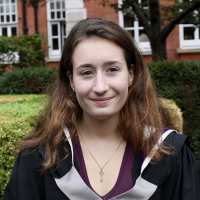
Before joining the Fluids CDT, I studied a BSc in Geophysics at Imperial College.
Throughout my undergraduate degree, I realised the importance of understanding fluid movement in Earth systems (from water production, carbon storage to formation of mineral deposits). I undertook a summer research project on numerical modelling of magmatic reservoirs in my first year which I continued in my second year. This project really sparked my interest in fluid dynamics: whilst I had a good understanding of the earth science concepts at play, I felt I needed to deepen my knowledge of the physical processes governing the system. From then on, I worked on more fluid dynamics related projects including transport of volatiles associated with the volcanic system in Tenerife (Volcanic Institute of Canary Islands) and the process of spontaneous imbibition in microfluidic cells (MIT).
The Fluids CDT appealed to me for various reasons: it is a great opportunity to build a solid base in theoretical fluid dynamics whilst also being exposed to a wide variety of applications and problems.
Ali Arslan
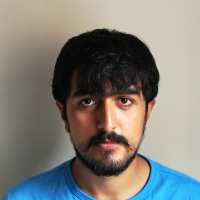 Prior to starting my journey in the CDT at Imperial, I studied Astrophysics at UCL. After obtaining my MSci in Astrophysics I spent a year teaching, wherein I realised my passion for a topic which affects our lives on many scales; fluid dynamics.
Prior to starting my journey in the CDT at Imperial, I studied Astrophysics at UCL. After obtaining my MSci in Astrophysics I spent a year teaching, wherein I realised my passion for a topic which affects our lives on many scales; fluid dynamics.
My modules in my undergraduate and masters entailed that I received a thorough training in mathematical techniques applied within physics, which reflected in a theoretical master’s thesis. It was during my master’s research that I first had any ‘hands’ on experience with fluids, I was looking at the evolution of the thermodynamic properties of dust particles in starburst driven galactic winds, it was in setting up the mathematical environment of a galactic wind that I had to deal with the equations of fluid dynamics.
Having seen the complexity of the world of fluid flows, I was drawn to the CDT in Fluid Dynamics. The combination of an MRes with the PhD, represented the greatest opportunity to receive the knowledge for experimental, mathematical and computational work, to carry out research of the highest quality. The multidisciplinary nature of the CDT means loads of great opportunities and insights to be gained.
Pratik Kandangwa
 Hello everyone! I am Pratik and I recently graduated from Imperial College London with MEng in Aeronautical Engineering. Having completed a research placement at Massachusetts Institute of Technology (MIT) and worked as an Undergraduate Teaching Assistant at Imperial, I truly believe that my future lies in research and academia. With this in mind, I am very pleased to have started CDT in Fluid Dynamics which incorporates an MRes during the first year. Personally, the idea of providing in-depth background/training and also, giving time to choose topics prior to PhD sets this programme apart from other normal PhDs. In my leisure time I love to hit the gym and play sports, mainly football and cricket. I also enjoy meeting and sharing ideas with like minded people and I am looking forward to my new journey as a postgraduate student.
Hello everyone! I am Pratik and I recently graduated from Imperial College London with MEng in Aeronautical Engineering. Having completed a research placement at Massachusetts Institute of Technology (MIT) and worked as an Undergraduate Teaching Assistant at Imperial, I truly believe that my future lies in research and academia. With this in mind, I am very pleased to have started CDT in Fluid Dynamics which incorporates an MRes during the first year. Personally, the idea of providing in-depth background/training and also, giving time to choose topics prior to PhD sets this programme apart from other normal PhDs. In my leisure time I love to hit the gym and play sports, mainly football and cricket. I also enjoy meeting and sharing ideas with like minded people and I am looking forward to my new journey as a postgraduate student.
James Hammond
 Prior to joining the CDT, I studied a MEng in Mechanical Engineering at Warwick University.
Prior to joining the CDT, I studied a MEng in Mechanical Engineering at Warwick University.
My Masters dissertation focused on the design and manufacture of a gas-fired adsorption heat pump, utilising a carbon-ammonia adsorption cycle to produce useful space heating and cooling. Although this project did not directly align with my interests in fluid dynamics, I opted to study both theoretical and computational fluids modules in my Masters year which piqued my interest and convinced me to pursue a PhD in the field.
I therefore decided to apply to the CDT as I felt it would give me an excellent grounding in fluid dynamics, and sufficient exposure to the vast array of its applications to make an informed decision when choosing my PhD project. Coming from a background in Engineering I was also very interested by the industrial links associated with the CDT at Imperial.
Andy Killeen
 I developed an interest in fluid dynamics during my undergraduate degree in Mechanical Engineering with Aerospace at Southampton. However, most of the fluid dynamics I encountered had been applied to an aerospace application. It was not until my dissertation, where I worked on analysing blood flow through a coronary artery stent, that I began to appreciate how broad fluids is as a field. A combination of how much I enjoyed studying fluids in a different context, and the preparation it gives you for your PhD, caused me to apply for the CDT here at Imperial. The focus on exposing you to many disciplines and problems means I’ll make a more astute choice for my PhD.
I developed an interest in fluid dynamics during my undergraduate degree in Mechanical Engineering with Aerospace at Southampton. However, most of the fluid dynamics I encountered had been applied to an aerospace application. It was not until my dissertation, where I worked on analysing blood flow through a coronary artery stent, that I began to appreciate how broad fluids is as a field. A combination of how much I enjoyed studying fluids in a different context, and the preparation it gives you for your PhD, caused me to apply for the CDT here at Imperial. The focus on exposing you to many disciplines and problems means I’ll make a more astute choice for my PhD.
Henry Putley
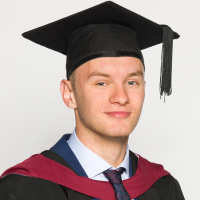 My name is Henry Putley, and prior to the CDT I studied for a Integrated Masters in Physics with study abroad at the University of Bristol. My Masters thesis focused on the production of argon clusters during supersonic expansion of atomic argon into low vacuum. This involved using Bernoulli's theorem to describe the change of state of the argon gas as it travelled through a de Laval nozzle into a vacuum chamber.
My name is Henry Putley, and prior to the CDT I studied for a Integrated Masters in Physics with study abroad at the University of Bristol. My Masters thesis focused on the production of argon clusters during supersonic expansion of atomic argon into low vacuum. This involved using Bernoulli's theorem to describe the change of state of the argon gas as it travelled through a de Laval nozzle into a vacuum chamber.
I first encountered the field of fluid dynamics during several third year astrophysics and cosmology courses, touching on mass and momentum conservation and shock creation in astrophysical jets. As my interests in the field developed, I undertook an introduction to continuum mechanics course, which covered the basics of incompressible and compressible flow. In my final year at Bristol, I undertook courses in gas and plasma physics, as well as geophysical fluid dynamics and general relativity.
The CDT was a perfect step from these courses into the field of Fluid Dynamics. It includes a rigorous and versatile training year, which should leave us well prepared to begin our PhD research in any topic we choose. Everyone on the CDT is really lovely, and we all feel like good friends after only a few short weeks together. It's great to be in a tight-knit cohort when you start something new. The ESA is also a partner to the CDT, and the opportunity to work with them on any upcoming mission research is an exciting one.
Sophia Vorderwuelbecke
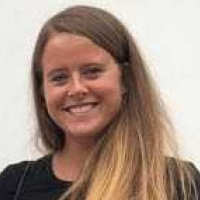
Before coming to Imperial College I studied for a Bachelor in scientific programming in Germany and meanwhile, worked at the plasmaphysics institute at the Jülich Research Center. Following that, I spent two years on a M.Sc. in mathematics. The first year of my Master's I stayed in Germany, but worked in the Jülich Supercomputing Center. Since I participated in a double degree program, I moved to the United States for the second year.
My Master's thesis was about numerically solving Burgers-Huxley's and Burgers-Fisher's equation as simplifications of the Navier-Stokes equation, but with a space-fractional extension. This got me in touch with fluid dynamics for the first time, and as I dove deeper into the topic I got really excited about it. Furthermore, the lack of a full physical understanding of the processes underlying the equations of my thesis was the reason why I felt the need to slightly change the focus of my studies. I hope in future I will be able to examine my results and explain that they are both mathematically and physically reasonable.
The CDT was especially attractive to me, because it does not only cover a broad field of applications, which I have never seen in my earlier studies, but is also composed of people with various backgrounds. This encourages the CDT students to think across scales or borders in more than one sense. Another fact which convinced me to apply is the partnership with companies, which opens the possibility (besides staying in research) to work in industry after graduating.
Anastasia Fragkou
 I studied Civil Engineering in the National Technical University of Athens (NTUA), Greece. As I was interested in fluid mechanics, once I completed my course, I worked as a junior civil engineer in hydraulic projects. During that time I was a team member on various projects and I was also responsible for the hydraulic study of a hydro-power plant in a river in North Greece.
I studied Civil Engineering in the National Technical University of Athens (NTUA), Greece. As I was interested in fluid mechanics, once I completed my course, I worked as a junior civil engineer in hydraulic projects. During that time I was a team member on various projects and I was also responsible for the hydraulic study of a hydro-power plant in a river in North Greece.
As I was working, I realised that I wanted to further my knowledge of fluid mechanics. I chose the CDT in Fluid Dynamics across Scales because of how it is organised. The fact that during the MRes year I have the opportunity to come across different applications of fluid dynamics across various subjects instantly appealed to me. In addition, the MRes year allows me enough time to actually decide what I want to do for my PhD, while also satisfying my wish for more in depth knowledge regarding fluid mechanics.
Ziad Cherfane
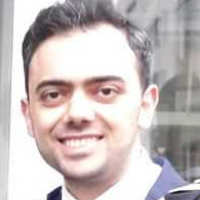 Before joining the CDT, I completed a bachelor of engineering in mechanical engineering at the American University of Beirut, in Lebanon. Following this, I enrolled in the MSc in advanced computational methods for aeronautics, flow management and fluid structure interaction at Imperial College London. Then I conducted some experimental work at Imperial College London wind tunnels. During this period, I had the chance to work under the supervision of world class academics, which led me to choose to continue my studies at Imperial College London.
Before joining the CDT, I completed a bachelor of engineering in mechanical engineering at the American University of Beirut, in Lebanon. Following this, I enrolled in the MSc in advanced computational methods for aeronautics, flow management and fluid structure interaction at Imperial College London. Then I conducted some experimental work at Imperial College London wind tunnels. During this period, I had the chance to work under the supervision of world class academics, which led me to choose to continue my studies at Imperial College London.
My passion for fluid dynamics thrives from the multi-disciplinary nature of the field. In fluid dynamics, various sciences, tools and techniques are involved in approaching problems. My particular interest is studying the wake turbulence and techniques to minimize the induced drag. Such research can have a great positive impact on the environment and on reducing the involved hazards.
Colin Gardiner
 I did my integrated masters in Mathematics at the University of Leeds. Within this, I was introduced to mathematical models in fluids dynamics. My final year project, “Instabilities in Magnetorotational Taylor-Couette Flow” investigated thresholds for instability onset within an axisymmetric model. This has applications to modelling formation of accretion disks around celestial bodies.
I did my integrated masters in Mathematics at the University of Leeds. Within this, I was introduced to mathematical models in fluids dynamics. My final year project, “Instabilities in Magnetorotational Taylor-Couette Flow” investigated thresholds for instability onset within an axisymmetric model. This has applications to modelling formation of accretion disks around celestial bodies.
There are two important non-dimensional parameters to consider, Hartmann (Ha) and Reynolds (Re) numbers. These characterise the balance between magnetic field strength and fluid velocity. We consider a conductive fluid immersed in an annulus of two rotating concentric cylinders, each with an associated rate of rotation. The governing equations are those of Navier-Stokes, for momentum balance and Induction, to account for electromagnetic behaviour. These equations were then linearised respectively about a steady Taylor-Couette profile and a solenoidal magnetic field. I then discretised these in Chebyshev polynomials radially to yield a linear matrix eigenvalue problem. A numerical implementation of this system was done using a NAG library eigensolver in Fortran 77. The resulting neutral stability curves, eigenvalues with zero real part, were contour plotted to describe the instability onset for various (Ha, Re) pairs.
The appeal of the CDT was both in terms of breadth and depth. Further study of experimental and computational methods was desired. The cohort-based nature enables cross-discipline communication, which I believe is tremendously important in the scientific community. This is useful to decide better the avenue of research I wish to pursue.
Javier Maellas
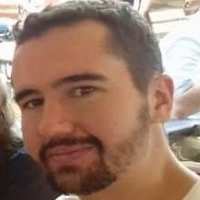 Before joining the Fluids CDT, I studied my bachelors in “Industrial Technologies Engineering.” During this period, I worked as a Research and Development Intern at the Aerospace and Defence Department of Altran Technologies SA. I also studied at the University of Waterloo, in Canada, as an exchange student.
Before joining the Fluids CDT, I studied my bachelors in “Industrial Technologies Engineering.” During this period, I worked as a Research and Development Intern at the Aerospace and Defence Department of Altran Technologies SA. I also studied at the University of Waterloo, in Canada, as an exchange student.
My bachelor’s thesis consisted on the CFD simulation of an energy-harvesting device designed to generate electricity from a fluid flowing inside a tube.
I have been in contact with fluid dynamics since the beginning of my bachelor’s thesis, and it has always been one of the subjects that I have enjoyed the most. That is why I decided to join the CDT.
Sam Hughes

My undergraduate degree was in Chemical Engineering at Newcastle University. During my final year, I found my passion for the subject of modelling, in particular focusing upon instrument design and optimsation, specifically relating to chemical reactors. My individual project during that year was the modelling, design and optimisation of an ATR methane to syngas reactor. It was through my research into fluid flow within the combustion section of this reactor that I came across the Fluids CDT at Imperial College London.
I opted to undertake this course for a number of reasons:
- It allows me to expand my ever-increasing interest in coding passively, namely through the high performance computing module, which provides the opportunity to learn several programming languages, as well as the computing knowledge to produce optimum code.
- All sections of the course are taught with CFD in mind, so that there are always practical examples that act as points of reference for familiarizing oneself with new mathematic techniques and equations. Hence we gain a better understanding and smoother transitions through otherwise complex independent mathematical concepts.
- The diverse applications of CFD mean that I am able to explore a range of diverse research areas before I determine which area of PhD research I want to pursue. This is applied during the MRes year, where lecturers coming from different fields have given examples from their subject areas, which has exposed me to applications of CFD that I hadn’t considered before.
Admissions
The CDT is unfortunately no longer recruiting students to the programme